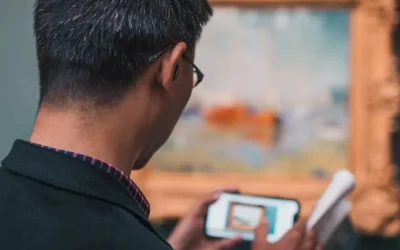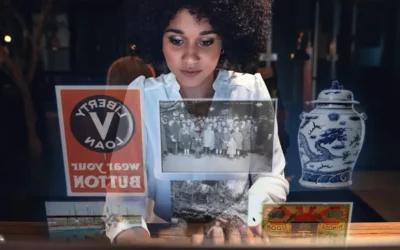The Top 4 Things a Museum Needs to Know About the Digital Visitor
Lucidea
In a previous post we reviewed digital user types and expectations. In order to make strategic decisions regarding a museum’s online content we need to understand who visits the content, how they engage with it, and if their content and navigation expectations are being met.
Questions to Begin
Do you know enough about your museum’s digital visitors to make sound digital strategy decisions? Here are a few reflection questions to help determine if you have enough information:
- Do you know the basic demographics of the museum’s digital visitors?
- Do you know their level of digital ability?
- Do you know what they want from the museum’s online content?
- When was the last time you viewed the museum’s online statistics?
- Does your museum have a digital strategy that includes regular statistical analysis?
- Has the museum conducted a digital usability study or user study in the last 5 years?
If you’re not sure of the answers to even one of the above questions, it’s time to dig into the statistics, and maybe even consider a usability or user experience study to evaluate the museum’s online content and delivery.
What is a Museum’s Online Presence?
A museum’s online presence is made up of several online locations, the museum website, collections management system (CMS), and social media channels. Content is created and delivered via all three avenues in a way that is appropriate for each medium. A museum’s online presence should be evaluated in total so as to understand the majority of the museum’s digital visitors.
The Top 4 Things a Museum Needs to Know
In order to make sound decisions regarding a museum’s online presence, the museum needs to gather information regarding who their digital visitors are, what they want, where they visit and engage, and why.
Who Are the Museum’s Digital Visitors?
Digital visitors can vary across online platforms and among museums. As not every museum nor online presence is the same, it’s important that each museum take the time to understand who their digital visitors are within each online location: website, collections management system, and social media channels. Map out visitor statistics that would be helpful for your museum to know. Some basic demographics can include: gender, age, and geographic region.
What Do the Digital Visitors Want?
What are the digital visitors engaging with on the museum’s website, CMS, or social media channel? What content is the most visited, searched for, or experiences significant viewing time per session? Information for these areas can be found in the museum’s website analytics, by viewing social media dashboards, and in working with the collections management system (or provider) to receive and view statistics.
Where Do the Digital Visitors Go and Where Do They Engage?
Where are the digital visitors going? Are they searching for a specific content area? Did they find it? Where is engagement taking place? This is a critical area to understand—because it captures the engagement part of the digital visitor’s relationship with the museum’s online content. To study and gather this information, ”mouse and click” tracking technology or a user study may be needed.
Why Do Digital Visitors Visit and Engage with the Museum’s Online Content?
Just as important as understanding where (but harder to capture) is understanding why a digital visitor chooses to visit and engage with a museum’s online content. This information may be gleaned from tracking and analytics, but in order to more accurately understand the why you’ll need to conduct a user study. Museum digital visitors should be interviewed or surveyed regarding their digital visits— similar to how a physical visitor study would be conducted.
Conclusion
Understanding the museum digital visitor is an important part of supporting and evolving the museum experience to meet user expectations. Information gathered to better understand the who, what, where, and why of digital visitorship will aid in better decision-making and strategic planning as it relates to the museum’s online presence. Informed and effective decision-making can’t happen without statistics, and if your museum doesn’t have any, it’s time to get some.
Lucidea
Rachael Cristine Woody has advised on museum cataloging and collections management at institutions like the Freer|Sackler Museum of the Smithsonian Institution and the Oregon Wine History Archive at Linfield College. Read more of Rachael’s posts on museum collections management. See also more on Lucidea’s solutions for museum collections management and digitization projects.
Similar Posts
Storytelling to Inspire Reflection Using Museum Collections Online
Storytelling with online collections is impactful, whether we choose online-only or as part of a hybrid approach to museum exhibitions.
Museum Collections Online: Learning Through Storytelling
Digitizing museum collections introduces new and engaging opportunities for storytelling. By leveraging digital surrogates—essentially online representations of physical objects—museums can enhance how they present narratives and information to audiences.
The Role of Museum Collections Online in Storytelling & Audience Engagement
Storytelling with museum collections online allows for a great degree of flexibility, offers additional detail, and lends a dynamism that is difficult to produce within a physical exhibition.
Examples of How Archives Can Be Used to Elevate Museum Collections
Last week we reviewed how archives can enhance museum collections online. This week will continue our work with an examination of specific examples, including what items different types of archives may contain and where to capture this data.




Leave a Comment
Comments are reviewed and must adhere to our comments policy.
0 Comments